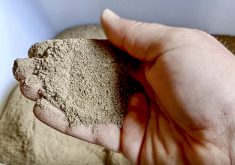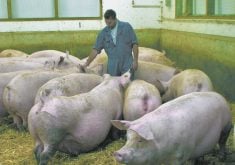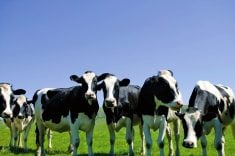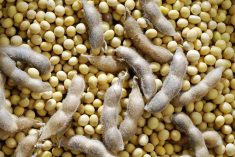Mycotoxins create havoc on livestock farms, and the concern mostly comes from Gibberella ear rot in corn and corresponding levels of deoxynivalenol (DON).
However, there’s a whole realm of mycotoxins out there in crops that can affect livestock.
In dairy cows, too much mycotoxin exposure means serious impacts on feeding and gestation. In poultry and pigs, the effects can be fatal.
Read Also
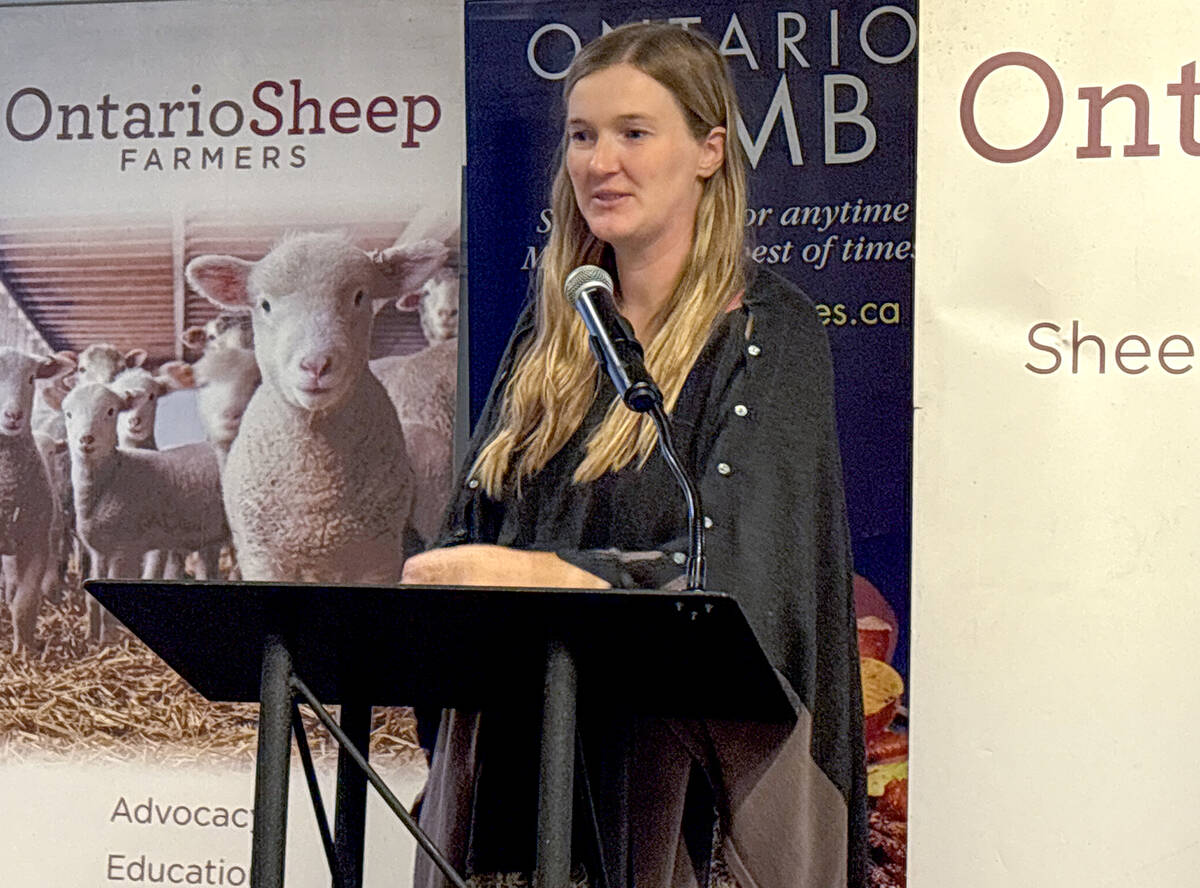
Footflats Farm recognized with Ontario Sheep Farmers’ DLF Pasture Award
Gayla Bonham-Carter and Scott Bade, of Footflats Farm, win the Ontario Sheep Farmers’ 2025 DLF Ontario Pasture Award for their pasture management and strategies to maximize production per acre.
Why it matters: According to a summary by the Ontario Ministry of Agriculture, Food and Rural Affairs (OMAFRA), disease outbreaks in crops occur every year in the province and affect yields and quality in winter wheat, corn and soybeans.
In a recent webinar with Dr. Gustavo M. Scheunemann, from the Department of Veterinary Medicine at the Ohio State University (OSU), the research went into depth on moulds and mycotoxins and their effects on dairy cattle.
Dairy farms rely significantly on stored feed and grains, silage and hay can be sources of mycotoxins.
Common problem moulds
The most common moulds and mycotoxins in dairy cattle can be separated into two segments: Fusarium on one side and Claviceps and aspergillus on the other. Fusarium includes fumonisin (FUM) and produces T-2 toxin, HT-2 toxin (not detected in samples in Ontario), nivalenol (NIV), zearalenone (ZEA) and DON, among others. Within the Claviceps subclass are ergot alkaloids and aspergillus, which produce aflatoxin and ochratoxin A.
“These are just a few of the mycotoxins,” said Scheunemann, referring to their prevalence on a global basis. “There are more than 400 that have been identified.”
In his research at OSU, Scheunemann found roughly 97 per cent of samples were positive for DON.
That’s similar to findings from testing conducted on behalf of OMAFRA in 2021, where 89 per cent of samples tested below two ppm.
Not just one problem
Scheunemann says total mix rations (TMR) can be contaminated with several mycotoxins at the same time. In his research, 57 to 87 per cent of samples had two or more mycotoxins present. The breakdown of his sampling was DON and ZEA in 39 per cent of samples, DON and FUM in 49 per cent and ZEA and FUM in 37 per cent of samples.
Within North America, DON ranks the highest with 64 per cent of samples testing positive. Along with NIV and T-2, it affects protein synthesis in dairy cows. Fumonisin (48 per cent) impedes enzyme production, ZEA is third at 28.9 per cent and stimulates estrogen production and aflatoxin was detected in 11 per cent of continental samples. Historically, aflatoxin has not been detected at significant levels in Ontario.
Mycotoxins increase plant fermentation rates
In more detailed research, Scheunemann said the presence of elevated levels of mycotoxins in feed – whether corn silage or concentrated feed with visible mould – causes increased fungal growth and increased fermentation of plant proteins. This can trigger the overproduction of undesirable bacteria like C. difficile, Listeria monocytogenes and E. coli, all of which place animals at a higher risk for intestinal hemorrhaging.
Effects on gestation
Another focus of Scheunemann’s research was the effect of mycotoxins on gestation. In his studies, the normal gestation period for dairy cows is 276 days (plus or minus six days). However, gestation periods shorter than that – 255 to 269 days – can result in increased stillbirth, metritis and retained placenta, morbidity and increased culling. Challenging birthing causes decreased milk production. The goal, he said, is to limit short gestation periods to less than 12 per cent; short gestations of 20 to 30 per cent of cows with mycotoxin-contaminated TMR saw more twin pregnancies, body condition scoring (BSC) loss before calving and poor cow comfort.






